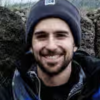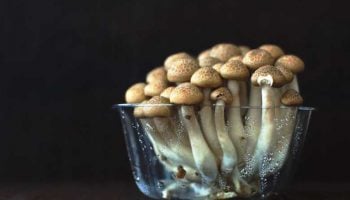Does microdosing carry a heart risk?
This is a question that’s got some people concerned over the past couple of months. We’d like to give you some rational perspective on the issue.
First, let’s emphasize: if there are risks associated with psychedelics, especially in a frequent microdosing regimen, we want to know about them. We want to be the first to understand the risks and report on them. Third Wave will never try to downplay any potential risks associated with microdosing.
This is why we’ve decided to take this issue so seriously. Read our article on the general risks of microdosing here.
The vast majority of evidence that suggests a heart risk of psychedelics comes from studies of MDMA. These studies show that very frequent, very high-dose use of MDMA is associated with an increase in the risk of valvular heart disease. They also suggest that this effect is due to the activation of the 5-HT2B receptor on the heart.
We know that LSD and psilocybin activate the 5-HT2B receptor, but we’re not sure if they activate it enough to cause a heart risk. We also have no idea how regular microdoses of these substances compare to frequent high doses of MDMA.
There is no evidence that occasional, high doses of LSD or psilocybin are associated with a heart risk. And millions of people who took psychedelics in the 60s and are living long happy lives would agree.
Frequent microdosing with psychedelics, however, is a different matter.
Our search for legitimate scientific studies into the risks of microdosing have led us to some research from a Polish lab in 2006. The study states that giving microdoses of psilocin (the main psychoactive form of psilocybin) to rats every day for three months produces “cardiac abnormalities.” Obviously, we needed to look into this.
A STUDY ON PSILOCIN MICRODOSING
Thankfully, a read of the full paper (provided to us by the authors) shows a whole heap of bias, and not much to really be worried about.
The journal in which the paper is published, Acta Toxicologica (Poland), is so unknown that it isn’t even indexed online. This isn’t necessarily a bad thing, but we might expect that its peer review system isn’t as rigorous as high-impact journals.
Another thing we noticed is a typo in the title. Sure, English is probably not the first language of the authors (and possibly editor), but it’s not a good sign.
The bias appears at the heart of the science, where the experimenters have declared the null hypothesis as “Psilocin causes heart damage.” Any good scientist knows that the null hypothesis has to be disprovable. They should be setting out to disprove that psilocin does not cause heart damage.
It appears at first as if the authors are just attempting to confirm their view that psilocin is toxic, based on some weak anecdotal evidence (one case study of a man suffering cardiac arrest after repeated high-dose psilocybin ingestion).
So the hypothesis is questionable, but maybe the rest of the science is solid. Let’s give it a chance.
WHAT DID THEY DO?
In the study, researchers gave 15 rats small doses of psilocin (10ug/kg, equivalent to a small microdose in humans) every other day for 12 weeks, and they gave 15 other rats a saline control. After 12 weeks, the rats had their heart activity monitored with an ECG and the levels of cardiac metabolites in their blood measured.
After this, the rats were euthanized and their hearts were dissected. Using electron microscopy, the researchers looked at structures within the rats’ heart cells for any evidence of damage.
WHAT DID THEY FIND?
The levels of ions in the blood did not look any different between the psilocin and control groups. The variability is very high and the authors haven’t performed any statistical tests, so it’s impossible to come to any significant conclusions. It seems irrational for the authors to conclude that psilocin alters blood chemistry when they haven’t performed any statistical tests.
The analysis of blood metabolites is completely useless, because the authors haven’t included the control group in the data. We have no idea why this is, but we can’t come to any conclusion about the results here.
The analysis of the dissected hearts is an attempt to look at the shape of the rats’ arteries. Again, variation in the data is high and the authors have performed no statistical tests, so we can only take the data at face value – which shows no difference between the psilocin and control groups. We have to assume that the arteries of these rats are not affected by microdosing.
The authors also mention “damage to mitochondria” in the hearts of the psilocin-treated rats. Mitochondria are the parts of cells that produce energy, so are especially important in cardiac cells. However, the authors don’t provide any actual evidence of this damage, aside from a few electron microscope images of mitochondria with no comparison to the control group. Again, we can’t come to any conclusion.
So far, there’s no solid science. However, the most important results come from the ECG measurements, as one of the earliest signs of Valvular Heart Disease is abnormalities in the heart beat.
On the surface, the ECG results seem to suggest that the heart beats of rats treated with daily psilocin are affected in a way that could suggest cardiac toxicity. However, a closer look shows that the experimenters have not compared the psilocin group to the control group – they have compared it to a group of rats that were given daily doses of alcohol. This means we have no way of knowing if the difference in cardiac health between the alcohol group and the psilocin group is due to the alcohol or the psilocin.
Additionally, we have no way of knowing if the effect on cardiac health is significant enough to equate to cardiotoxicity in human microdosers. Studies in rats can sometimes offer a good estimation of human physiology, but in this case the results are just not clear enough to come to a conclusion.
Overall, the results are relatively meaningless. On one hand, the authors don’t provide any solid evidence that microdosing is safe – but they certainly don’t provide any evidence of microdosing being dangerous.
WHAT DOES THIS MEAN FOR THE AVERAGE MICRODOSER?
Despite the lack of evidence, it’s still best to be cautious. We know that psychedelics can activate a receptor in the heart that is a risk factor for heart disease. So it’s probably sensible to avoid taking psychedelics every day or for extended periods.
This is why we advise microdosing for no longer than 90 days, with two rest days between every dose day. It’s also sensible to avoid microdosing if you have a pre-existing heart condition.
Microdosing needs some solid safety research. What we’d like is a human ECG study. One approach could be to perform simple ECG tests on frequent microdosers – a study like that would be observational, inexpensive and informative.
We’ll stay on top of any future research, and adjust our recommendations accordingly if anything changes. But for now, like everything else in life, microdosing is probably best when enjoyed in moderation.








I hope there’s more research into this soon. MDing has so much potential for chronic depression, which I have, but if it causes heart disease then we need to know so we can make educated choices.
Third wave being the world promoter of psychedelics is a disappointment.
Reading your report which is an interpretation of another report. Using that to back up it’s safe to microdose really raises a question.
You guys are are very helpful yet biased and opinionated.
You cannot just claim a statement based on an interpretation and disregarding their research.
We are completely aware of the limited information we have on micro-dosing psychedelics and we try our best to work with the anecdotal data we have. As mentioned in the article, there are risks associated with micro-dosing, however, we would need more clinical research for us to come up with any conclusion regarding micro-dosing’s safety profile. We acknowledge that there are risks to consider and we strongly urge exercising caution when dealing with psychedelics.
Your analysis suggests that ‘the experimenters have not compared the psilocin group to the control group – they have compared it to a group of rats that were given daily doses of alcohol. This means we have no way of knowing if the effect is due to the alcohol or the psilocin, and if the effect would actually equate to cardiotoxicity in human microdosers.’
This is confusing. How could the effect in the psilocybin group be created by alcohol? Or are you saying that the effect was seen in both the psilocybin and alcohol groups?
Really I would like to see the supposed rat’s ECG before the micro dosing, and then after. If it was only in one rat, its probably more likely that the rat had an issue to begin with. I wish studies were done more cautiously and the results more clear. Cool article though !
This article was informative and did not sound biased. You did make statements from the information provided to you and they sounded just based on the facts provided. Being the fact that the way the study was performed, there really can be no conclusive evidence of the cardio effects of microdosing. and then added that you still place high regard to use caution and be well informed about microdosing. Kudos for this being on such a large platform of readers. What I would like to do is start a study on the cardio effects from the simple suggestion given here to monitor people microdosing and doing a regular ECG. I would also like to do a study on the change on brain health with microdosing. Is there any advise on how to go about doing this? Third Wave is a huge platform and could reach a large audience of people wanting in on such a study.
Hi there Maria,
Thank you for your input! We are not medical professionals and do not conduct any medical research on our own, but I would recommend you look into the Multidisciplinary Association for Psychedelic Studies. They are one of the primary organizations right now conducting legal psychedelic trials. Check out their website here: https://maps.org/
– Britt @ Third Wave
It’s very frustrating to not be able to get specific information about this. I realize you said at the end of the article that’s it’s sensible to avoid Mdosing with an existing heart condition. What if it’s just high blood pressure? What if the traumas suffered in the past could greatly benefit from microdosing for 30 days, with an every 4th day intake? What if the benefits are worth the risk?
I’ll be microdosing soon and plan on keeping a blood pressure journal. I had already started but the dose wasn’t really known but I have taken steps to be dose accurate. I plan on different doses to find my sweet spot as I’m doing this for multiple health reasons. I have high blood pressure and a pretty high resting pulse and after about a month of taking a small amount here and there I went to my doctor for a scheduled appointment. While I was there my blood pressure was taken as well as my resting pulse and to my surprise both were the best they had been in over 30 years. The only variable was the LSD. I hope to repeat this and will report back either way.
I am 71 years old and have been diagnosed with a “Major depressive dissorder” some 20 plus years ago. Monthly visits to my “shrink” for “happy pills” are becoming less frequent as I live a long distance from said “shrink” and am just about over the fact that just about every anti-depressant makes orgasm impossible.
Recently I decided to try micro dosing magic mushrooms (Tasmanian “Blue meanies”) and while thye have definately reduced my “Black dog” both in occurence and severity, I have noticed a definate increase in heart rate. Having already had 6 stents I am worried about my heart.
Right now, my thought are “It is better to live a shorter life feeling near normal than a longer life with “the dog”.
I see a Psychologist every month and he really helps for a week or so, then it’s back to ‘The dog”.
Thoughts are that legalising might bring some drugs to the market which can look after my head while not endagering my heart.
Your thoughts?